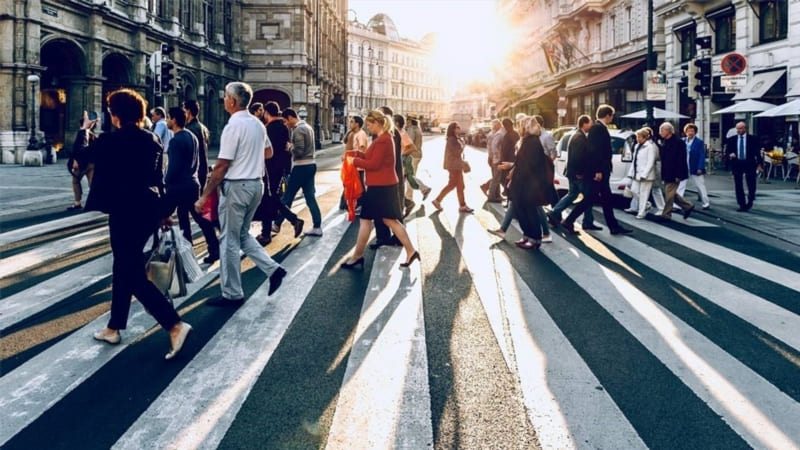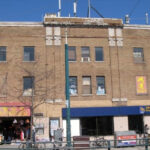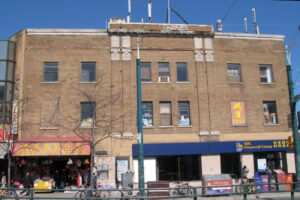Vancouver, a bustling city with a keen focus on environmental conservation, has always been at the forefront of cutting-edge urban planning. Over the past few decades, it’s been evident that urban transportation has undergone major transitions around the world, and Vancouver isn’t to be left behind. By the year 2012, the city had mapped out a visionary 30-year transportation plan, with a clear emphasis on reducing car dependency and promoting walking. Let’s dig deep into the specifics of this ambitious plan.
Pedestrians First: The Shift to Walking
Cities around the world have realized that walking isn’t just an activity; it’s a mode of transport. And Vancouver has made it the cornerstone of its transportation policy.
- Why Walking? Well, for starters, it’s clean, green, and lean. The environmental impact of walking is virtually zero, and it aids in reducing the carbon footprint of the city. On the health front, a city that walks is a city that stays fit, cutting down healthcare costs in the long run.
- Infrastructure Adjustments: For any city to promote walking, it needs to have a supporting infrastructure. This includes pedestrian-friendly zones, safe sidewalks, and crossings. The city also invested in beautifying walking routes, making it a pleasurable experience rather than a mere commute.
- Challenges and Obstacles: While the intent was noble, there were roadblocks – quite literally! Transforming a city that was once car-centric is no walk in the park. Land acquisition, budget constraints, and even public resistance were some of the challenges faced.
From Four Wheels to Two: The Rise of Bicycles

If walking was the poster child of this transportation plan, bicycling wasn’t far behind.
- Bike Lanes and More: Recognizing the need for safe biking pathways, Vancouver embarked on an ambitious plan to carve out dedicated bike lanes throughout the city. The lanes aren’t just about commuting; they’re also about creating an ecosystem where bicycles are as much a part of the cityscape as cars once were.
- Rent, Don’t Own: The city encouraged a culture of bike rentals, helping those without bikes to hop onto one. This not only reduced the need for bike ownership but also promoted a sense of shared economy.
The Changing Face of Public Transport
Public transport forms the backbone of any urban transportation system, and Vancouver’s was no different.
- Efficiency Over Expansion: Instead of merely adding more buses or trains, the focus shifted towards making the existing system more efficient. Real-time tracking, dynamic scheduling, and smart pricing were some of the initiatives rolled out.
- Greening the Fleet: Vancouver, with its green credentials, ensured that its public transport fleet moved towards more sustainable fuel options. Electric buses and hybrid trains became more common, ensuring that even when residents chose not to walk or cycle, their carbon footprint was minimal.
The Diminishing Role of Cars
Cars have long been a symbol of freedom and mobility. But in Vancouver’s 30-year plan, they took a backseat.
- Congestion Pricing: Borrowing a leaf from other global cities, Vancouver introduced congestion pricing in high-traffic zones. This not only discouraged car usage during peak hours but also became a revenue source for the city’s other green initiatives.
- Car Pools and Shared Mobility: The emphasis shifted from car ownership to car usage. Carpool lanes, incentives for shared mobility, and promotion of car-rental services were steps in this direction.
The Future: What Lies Ahead?
While the plan laid out in 2012 was visionary, transportation, like any other sector, needs to evolve. With emerging technologies and changing societal attitudes, where does Vancouver see itself in the coming decades?
- Tech Intervention: Autonomous vehicles, AI-driven traffic management systems, and smart transit hubs are some of the things on the horizon. While the foundation laid in 2012 was solid, the superstructure built on it will be tech-heavy.
- Holistic Development: Transportation can’t be viewed in isolation. As Vancouver grows, there’ll be a need to integrate transportation planning with housing, employment, and recreation. A truly smart city is one where all these elements sing in harmony.
Further Reading: For those who wish to deep dive, you can check out the details on Wikipedia.
Note: This article is a creative interpretation based on a provided slug and may not represent the actual details of Vancouver’s 30-year transportation plan.








